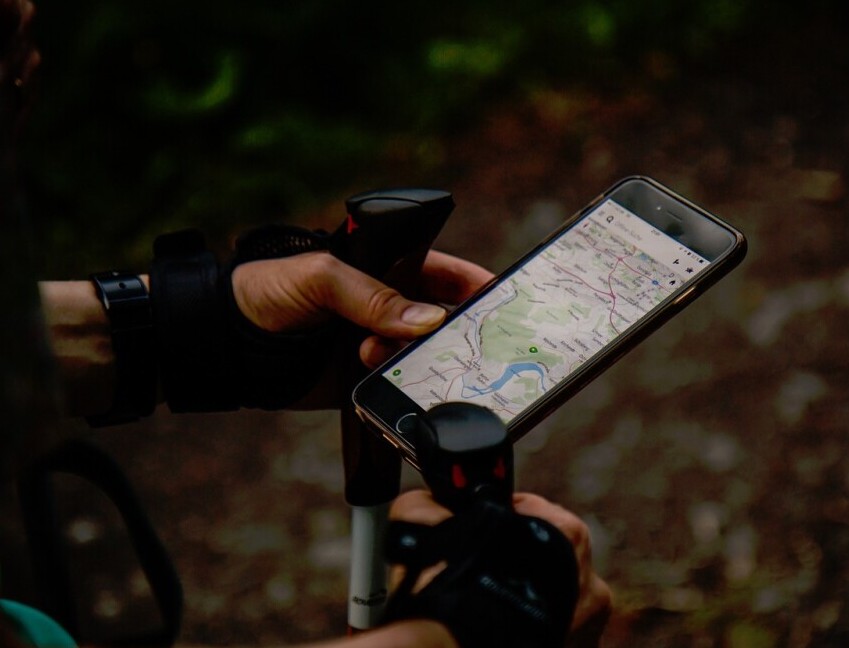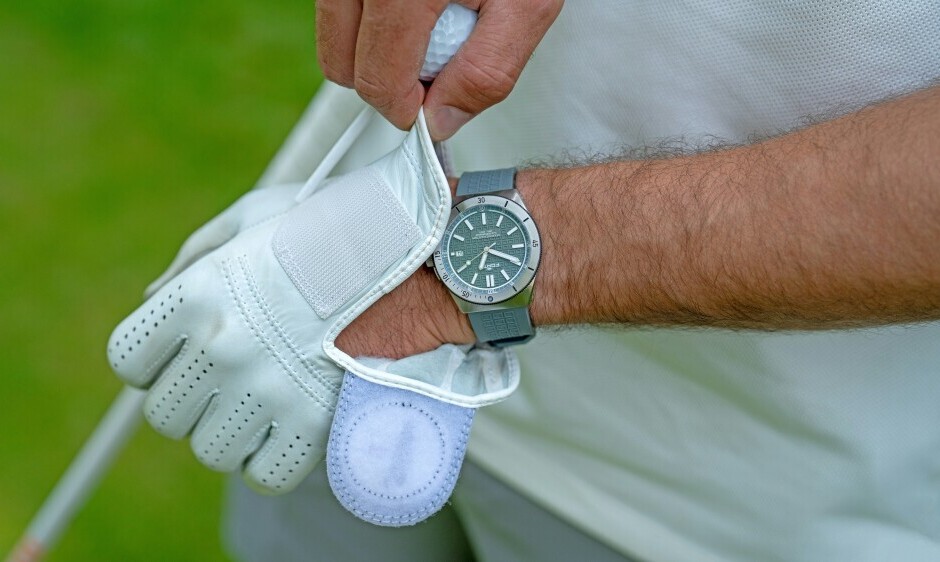What Is Golf Gps?


Fore! Quick note: a few links here are affiliate links. If you snag gear through them, I earn a small commission — no extra strokes added to your game.
At its core, Golf GPS is simply a navigation system designed to help golfers track their position on the course. These gadgets utilize satellite technology to map out golf courses in detail, providing accurate distance measurements from any location on the course to various key points like holes and hazards. Get excited, because the golf viking is back to drop another nugget of golf wisdom onto the masses. Today it’s all about the golf gps.
Now, let’s just take a moment to appreciate how far things have come. Before these devices, golfers had to rely on their eyes, markers, or maybe a trusty caddy to estimate distances. We’ve come a long way. With Golf GPS, what used to be guesswork is now precise and reliable info at your fingertips. This transformation has revolutionized the golfing experience.
So, why exactly do you need it? The primary purpose of Golf GPS is to enhance your game by providing accurate, real-time data that can influence your club choice, strategy, and overall gameplay. Whether you’re an amateur still getting the hang of it or a seasoned pro fine-tuning your skills, having this data removes the uncertainties of gauging distances. This gives you an accurate read on your distance to the hole takes the guessing game out of the equation.
These tech wonders benefit players of all levels. If you’re a newbie, it’s like having an extra set of eyes guiding you across the course. For the pros, it’s all about refining techniques and strategies with data-backed decisions. No matter where you land on the experience spectrum, Golf GPS steps up your game.
As a new golfer it can help you simply understand the layout of a hole, as well as how to gauge which club to use from what distance. For more experienced players, getting the fine details and statistics will let you tweak your game to get maximum performance.
The shift from traditional golf to tech-enhanced play shows how modern golfers appreciate the blend of skill and innovation. GPS technology in golf isn’t just a fancy perk—it’s become almost essential. It can offer you a whole lot more than just looking at the course head on.
Whether you’re looking to improve your score or just enjoy a more relaxed round, incorporating a Golf GPS into your game will likely open up new possibilities you hadn’t considered before. So how does this while thing work, anyway?
A golf GPS helps you know distances to hazards, greens, and fairways. To make the most of these tools, check out our guide on golf training aids and how to use them, where GPS devices are covered alongside other useful gear.
Ready to level up your golf game? Click here.

How Does Golf GPS Work? Understanding the Tech
Ever paused to wonder what goes on inside a Golf GPS device? It’s a blend of cool tech all designed to make your golfing life easier and more informed. At its heart, GPS technology involves satellites orbiting the Earth that communicate with your device to pinpoint your location on the golf course.
Here’s the lowdown: these satellites transmit signals that are picked up by your GPS device. By calculating how long it took for the signal to travel, your device figures out exactly where you are on the planet and on the course. This connection isn’t just about placing you on a map—it’s about giving you dynamic data, like the distance to the next hole or the location of hazards, in real time.
Golf courses are meticulously mapped so the GPS device knows every nook and cranny. This means when you launch your GPS device at the course, it matches your location with preloaded course maps. Think of it like having a virtual caddy who knows every corner of the green.
The standout feature of a Golf GPS is its ability to provide accurate distance readings, helping you decide whether to pull out the driver or maybe something more subtle like a 7-iron. But here’s the kicker—it’s not just numbers on a screen; it’s a tool for knowing what’s ahead and planning your shots with confidence.
Different devices might offer additional features too, like shot tracking or digital scorecards. These features are all about making sure you’re equipped with the best possible information to improve your score and enjoy the day out on the links. It’s a mix of tradition and tech, right in your pocket. This can depend on the brand of gps.
Using GPS can improve your course management, but pairing it with the right swing fundamentals is just as important. Brush up on your technique with our guide on mastering the golf swing so you’re making the most of each shot.

Varieties of Golf GPS and How to Use Them Effectively
Golfers have options when it comes to GPS technology. From handheld devices to wearable watches and even mobile apps, there’s something for everyone’s preference and budget. Each type has its own unique set of features, so understanding what suits your style is key.
Handheld Golf GPS devices are traditional favorites, offering easy-to-read screens and detailed course maps. They’re perfect if you like a bit of old-school tech in your golf bag, with sturdy designs fitting well in your hand or cart.
Then, there are Golf GPS watches, which are becoming increasingly popular. These multifunctional devices not only track distances but also monitor fitness stats like steps and calories burned—a great pick if you’re into gadgets wearing multiple hats.
For those who prefer everything on their smartphone, golf GPS apps bring digital convenience to your fingertips. Just download your chosen app, and you’ve got a handy guide right on your phone. Most apps require a subscription for full features, but they offer flexibility and cutting-edge tech for both Apple and Android users.
When it comes to using these devices effectively, a bit of setup before hitting the course goes a long way. Ensure your GPS device or app is fully charged and updated with the latest course maps. Spend some time familiarizing yourself with the menu and functionalities; the more comfortable you are with the tech, the more seamless your game.
On the course, keep an eye on your GPS to plan shots, select clubs, and adjust strategies based on the real-time data it provides. This info empowers you to play smarter, not just harder. Keep in mind to respect course etiquette—no one likes distractions, so use your tech wisely and discreetly.
One of the best ways to lower your scores is to combine accurate yardages with a strong short game. Explore our complete breakdown on short game mastery to sharpen your skills around the greens.

Embracing Golf GPS in Modern Golf: A Game Changer
Golf GPS is a game-changer for anyone—from weekend warriors to seasoned pros. It offers insights that were once only available through extensive experience or a trusty caddy. Whether it’s helping shave strokes off your game or just making the experience more enjoyable, the value it adds is undeniable.
So, who uses Golf GPS the most? Practically anyone who’s serious about improving their game. Professional golfers leverage it for data-driven strategies during practice, while enthusiasts use it to know their courses better and play more efficiently. It’s an open invitation for any golfer eager to enhance their play.
While GPS is incredibly helpful, its use isn’t universal everywhere. Some courses embrace it, understanding that the tool can speed up play by reducing time wasted in decision-making. However, certain professional tournaments have restrictions during official rounds to maintain the tradition and challenge of the game.
For recreation, feel free to fire up that GPS wherever it’s permitted. When traveling or playing a new course, it’s especially helpful. Just be sure to check with the course rules so you know what’s fair game.
Golf GPS continues to influence the sport’s evolution, blending tradition with innovation. It’s reshaping how players interact with the game, making technology an integral part. As the sport adopts more tech, it’s clear Golf GPS isn’t just a trend—it’s a staple in the modern golfer’s toolkit. I’ll see you out on the golf course, using that new GPS.
Golf GPS helps track your performance, but so does physical preparation. If you want to hit the ball farther once you know your exact distances, see our guide on golf fitness for power, flexibility, and consistency.


